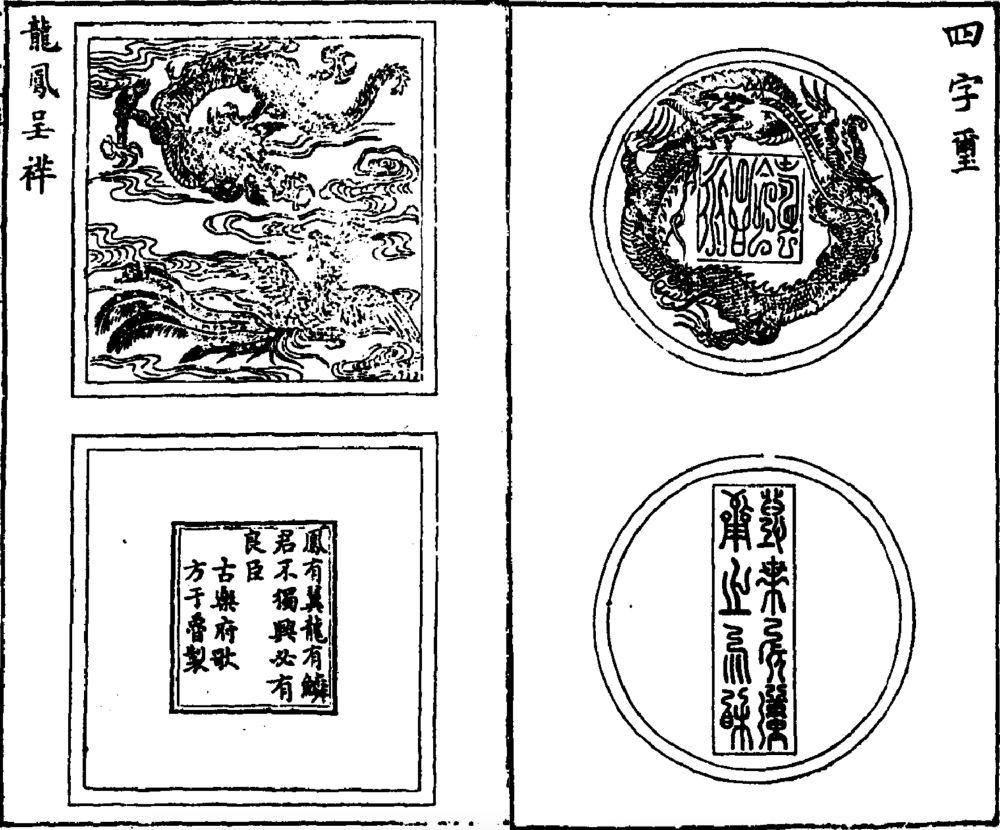Fangshi mopu 方氏墨譜 is a book on ink-sticks written during the late Ming period 明 (1368-1644) by Fang Yulu 方于魯 (1541-1608), original name Daji 大激 (Yulu was his courtesy name), alternative courtesy name Jianyuan 建元, from Shexian 歙縣, Anhui. Wang Daokun 汪道昆 (1525-1593) introduced him to the Fenggan Society 豐干社, a poetry club, where he became acquainted with the ink-maker Cheng Junfang 程君房 (see Chengshi moyuan 程氏墨苑). Fang decided to become his disciple, but the two soon became fierce competitors. This strife led to the death of Cheng, for which reason Fang was heavily criticized until the end of his life. Fang's collected poetry is called Fang Jianyuan shiji 方建元詩集.
The book of 6 juan length begins with an enumeration of ink-sticks used as gift from and to contemporaries. The author divides ink-sticks into six categories: national treasures (guobao 國寶), "national flowers" (guohua 國華), "Insight into antiquity" (bogu 博古), collectibles (bowu 博物), "Buddhist treasures" (fabao 法寶), and "wide treasures" (hongbao 鴻寶). Text and illustrations give an overview of various types and shapes of ink-sticks. The descriptions are written in refined language and provide fine details of all objects. Each type (shi 式) is praised by a concluding statement (zanyu 贊語). The text of the book and the inscriptions are held in various writings styles, from standard script (zhenshu 真書) to grass script (caoshu 草書) and seal script (zhuanwen 篆文).
 |
Both objects are decorated with dragons and engraved with mottos and verses. The images show the front (top) and the back side (bottom). |
In spite of all the beauty of the calligraphy and the adornments of the ink-sticks, it must not be forgotten that the book was written to show off Fang's mastery of ink-making and to compete with Cheng Junfang for fame. For this reason, the text does not include a single information on the production of ink and ink-sticks.
The book was published in 1589. It is included in the series Xuxiu siku quanshu 續修四庫全書.